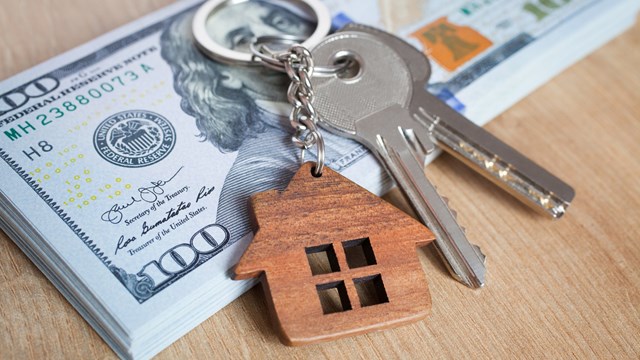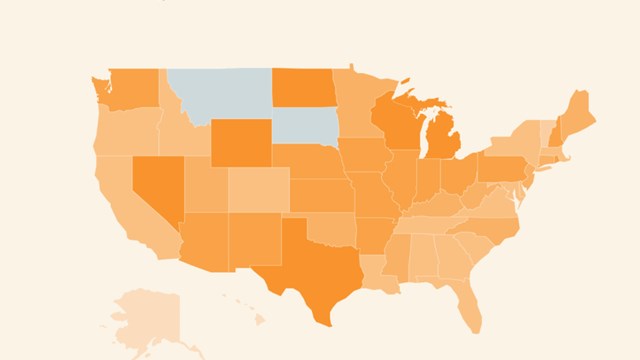
There are lots of ways for homebuyers to find properties for sale, but regardless of whether one finds their prospective dream house online, sees a “For Sale” sign in a building, or gets a hot tip word-of-mouth, at some point buyer and property need to meet in person, as it were. That could be why open houses have long been a staple of the sales process in New York City co-ops and condos.
C'mon By...
For the real estate novice, an open house is basically where a gaggle of prospective buyers descend upon a property and mill around, looking it over and picturing themselves living there. Open houses are a great way for realtors to connect buyers and sellers—but they can pose certain concerns for boards, property managers, and neighbors in terms of safety and security, nuisance, and traffic.
According to Ken Lovett of John B. Lovett & Associates Ltd., a real estate management firm in College Point, the keys to holding a successful open house are to notify the manager and key personnel in advance, conducting them for short periods of time as opposed to all day, and to follow all the rules that the building has in place.
“There are usually a set of rules that an agent and resident must follow when holding an open house and as long as those rules are followed, there’s usually not a problem,” he says. “In a rare case, a realtor does something they shouldn’t but we talk to them and alert them to the problem and make sure they don’t it again. In my experience, there hasn’t been too many cases of things going wrong.”
Maura Jarach, executive director of townhouses at Keller Williams New York City, stresses the importance of managing the expectations of the owners and preparing the property properly for all visitors and potential buyers.
“I represent and research the rules of a particular building well in advance of my arrival,” she says. “I have seen other agents lose their privilege to hold open houses in some buildings when rules are not followed and a neighbor reports misconduct, etc.,” she says.
Sarah Orlinsky-Maitland, an associate real estate broker with Manhattan residential real estate firm Brown Harris Stevens, had one open house recently where more than 60 people showed up. While a successful outcome like this is well received, it was important to manage everything closely to ensure than no building rules would be broken.
One concern in this scenario was controlling the elevators. With so many people coming and going, she limited access to 10-minute intervals to make sure that the home seekers weren’t monopolizing the elevator for residents.
“Noise, unruly or disrespectful behavior are also concerns,” she says. “Unattended visitors can forget that they are in a home or in the common area of a building.”
Carol Staab, an associate real estate broker with Manhattan-based Douglas Elliman, reminds you also need permission from your client before conducting an open house. While it seems like a no-brainer to help sell a home, not everyone is inclined to do so.
“Once you get permission from all involved, you need to promote the open house well within the real estate community and the public,” she says. “I like to do it only by appointments, and I try to schedule them about 20 minutes apart.”
As a way to appease neighbors in the building, Staab also sends out invitations to the residents so they can see the process.
Rules and Regulations
Orlinsky-Maitland begins thinking about an open house as soon as a contact is signed with a seller and her first step is to always contact the managing agent to find out what protocol is in regards to access to the building and amenities.
“A basic rule is to use common sense. You are targeting a specific audience. It is important to keep in mind what the likely preferred time your audience is expected to show up,” she says. “If that interferes with house rules, you’ve got to find a way to entice your audience within the boundaries imposed by the building.”
Many buildings require an appointment and notice for holding an open house and some will limit the amount that can be held simultaneously at one time. Jarach says a smart move is to choose a time frame that includes other open houses in the surrounding area to capitalize on the flow of traffic and increase the overall turnout.
Christopher S. Moseley, a senior executive vice president and associate broker with Rutenberg Realty LLC in Manhattan, says the most important rule in holding an open house concerns communication.
“You must communicate the fact of a pending open house in advance to all concerned. You cannot just show up to a building the day of the scheduled open house and announce that you are having one without inquiring for prior approval or steps that you must take beforehand,” he says. “I always start by talking with the doorman and super. They can fill you in on the way their specific building works as every building works a little differently.
Still, every building is different and regardless of what its rules are, an agent must respect the rules that have been put in place. Lovett says the best thing is to have clearly defined written rules for brokers to abide by. One building won’t let brokers sit in the lobby, another won’t let them visit common areas on weekends and another won’t let signs be placed anywhere in the building to advertise when an open house is taking place.
“We had a building that was self managed. The board president requested that we post a note in the building on the bulletin board 24 hours before the open house. Not being a neighbor to that location, it was an extra step that we performed optimistically on Saturdays before a scheduled open house,” Orlinsky-Maitland says. “Other buildings sometimes want a fax addressed to the doormen so they are aware of the incoming traffic.”
Staab says there are some buildings that don’t allow open houses at all—especially luxury condos uptown. One condo she deals with won’t even allow you to use its name and address to promote or advertise an opening. In some cases, brokers can sometimes invite certain people by appointment if management approves.
Secure and Insured
The last thing anyone wants is a bunch of errant visitors walking around their hallways, common areas or taking up parking spaces near their home, but that’s exactly what can happen when open houses are held.
“Of course, the major concern is strangers lurking in the building. Nobody wants to have someone wandering the halls aimlessly and stirring about,” Moseley says. “We should all be conscientious as non-residents come into our open houses.”
Moseley believes that in addition to alerting the proper parties, having a specified window of time and using a sign in sheet to get a perspective buyer’s information is vital in keeping things safe and secure.
“I always try and get business cards from everyone if possible, because sometimes you can’t read their writing when they sign in,” Staab says. “In some circumstances, I think it might be a good idea to ask people for an ID and let the concierge or doorman control that.”
Some buildings have an “escort rule” as well. This means that potential visitors must be escorted to the property where the open house is being held. Violating this building rule can cause friction in the building and damage an agent’s reputation.
“Always advise sellers to regroup and store away items of value to them. It may not always be jewelry—it could even be a pillow they love,” Jarach says. “Whatever it is, have it removed so no one is needlessly upset should something get damaged or go missing. While it is rare, things can happen even when precautionary measures are taken.”
Another step to take is to have enough bodies in the property to watch people. If it is a studio and you can keep an eye on things fine, however if you have a 2-3 bedroom home to show, having additional agents along to air on the side of caution is always a smart thing.
“I always have a co-worker (licensed agent) working with me at open houses, even for a studio. You never know if someone will want to visit the roof deck, while someone else is still in the apartment,” Orlinsky-Maitland says. “Or if you’ve got a huge turnout, you want one person maintaining traffic control, while the other focuses on being available to agents and buyers viewing the apartment.”
As for insurance, those selling the unit would be responsible for any coverage and an association’s coverage would kick in if someone was to meander off and slip and fall, steal something or cause damage elsewhere in the condo.
A broker can be jointly held liable for not warning buyers of unsafe conditions/defects that may cause injury.
“I make sure that people put everything away and clear things off the floor so you don’t have to worry about people tripping or having an injury,” Staab says. “That’s not something that really happens, though.”
Final Thoughts
There are a number of ways that condo associations can do their part to keep the disruptions from an open house to a minimum. This includes everything from notifying the neighbors that an open house is taking place, limiting traffic, keeping track of all visitors and making sure that the realtor knows all rules and expectations.
An open house is a great way to bring in people that might otherwise have missed the buying opportunity and show people all that’s great about your co-op and condo.
Keith Loria is a freelance writer and a frequent contributor to The Cooperator.






Comments
Leave a Comment